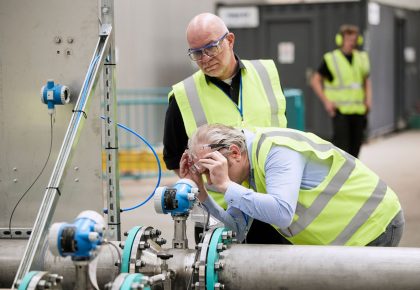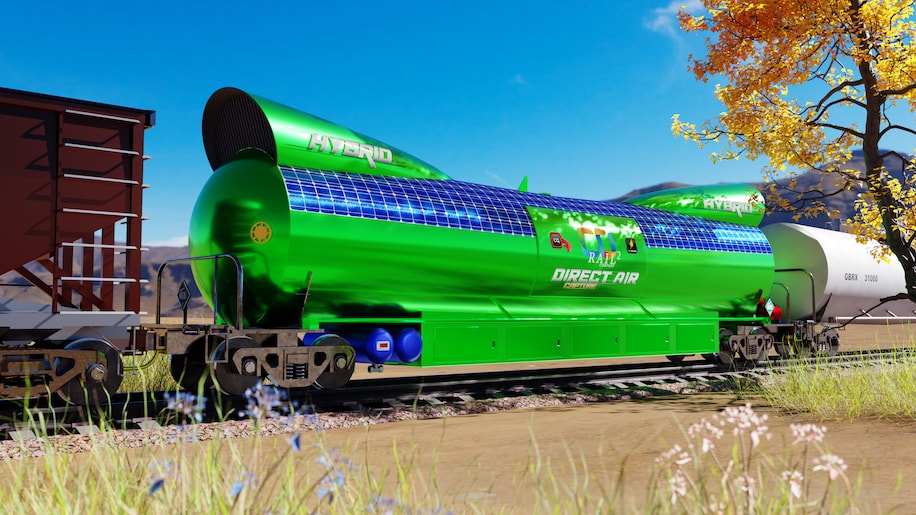
The Inflation Reduction Act, which passed the Senate this August, would unlock around $369 billion to find solutions for climate change. It marks the single largest investment in combating global warming in American history. Experts have estimated it will reduce America’s planet-heating emissions by about 40% by 2030, compared with 2005 levels.
The proposed legislation includes tax credits, rule changes and grant money to lower carbon emissions and reduce household power bills. It could also have another effect: Making experimental green energy solutions, incredible ideas that seemed unattainable more attractive to investors.
Promoting creative green solutions, start-ups, researchers and established companies across the country will have the benefit of some energy boost and cash. Here are some of the most noteworthy climate solutions that can become reality thanks to this law.
Direct air capture machines

Looking like shipping containers stacked on each other, the machines are designed to eliminate carbon. It is realized either by sucking it out of the air and storing it deep underground or by converting it into something solid, removing it from the atmosphere permanently.
The technology has caught the attention of the Biden administration, Tesla and SpaceX CEO Elon Musk and companies such as Alphabet and Meta. And even if carbon capture technology is a creative and essential way to rapidly slow the Earth’s warming and reach net-zero emissions by 2050, the need on reducing greenhouse gases by changing behaviors in society remains important.
Adrian Corless, the chief executive of Carbon Capture, based in Pasadena, California, said these changes will help his business scale up. Currently, he said, it costs his company roughly $400 to $500 per ton of carbon captured to operate.
Having a larger tax credit makes his business more attractive to investors. Dropping the project size cap to qualify allows his company to partner with states, corporations and other entities on smaller projects across the country.
He said: “It allows us to enter the market and have a business starting in 2023”
Carbon capture rail cars
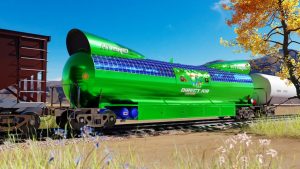
Carbon capture projects might not be limited to containers out in the middle of nowhere if CO2 Rail Company, an Austin-based company gets enough funding to pilot and scale their technology.
The company proposes putting carbon sucking machines that look like rail cars on existing trains. They would use power generated by the train’s braking system to function, eliminating energy costs which plague other carbon capture solutions.
As the train travels, the rail cars would suck air and store the separated carbon in to a reservoir on board. Once the car reaches a rail yard, carbon would be emptied out into a CO2 rail tank or potentially injected into a pipeline.
Eric Bachman, the chief technology officer of CO2 Rail Company, said the $180 per ton tax credit in the spending bill helps make the case to investors that his company will be financially viable.
Superhot rock energy
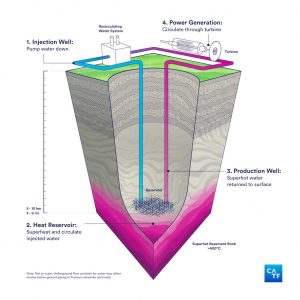
For years, scientists have used the heat generated from the Earth’s core to create geothermal energy and convert it into clean sources of power. But the spending bill could spur research and development for extreme versions of the technology, which remain years from fruition.
One particular concept is “Superhot rock energy.” The method, climate scientists say, aims to harness the intense heat generated from the Earth to develop an alternative energy source that could be a limitless source of energy that emits zero greenhouse gases.
It requires drilling miles down into the Earth until temperatures reach around 750 degrees Fahrenheit. After that, water would be pumped down where it would turn into steam and come back up to the earth into a turbine and be processed into energy.
The technology is years away from widespread use because of engineering challenges, said Bruce Hill, the chief geoscientist at the Clean Air Task Force. In parts of the world that get very cold and are away from breaks in the Earth’s plates, companies would need to drill upward of 9 miles deep to reach 750 degrees. The deepest anyone has ever drilled into the earth is almost 7.5 miles, Hill said.
The spending bill’s tax credit for geothermal technologies will spark research and development and help solve these challenges, said Terra Rogers, the Clean Air Task Force’s program director of superhot rock energy.
It signals “to early-stage investors that they will have support as they push superhot rock energy from the research, development, and demonstration stage into commercial viability,” she said.
Carbon-free building blocks
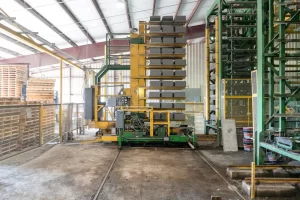
At present, concrete production accounts for nearly 10 percent of global greenhouse gas emissions. The most carbon-emitting part of creating concrete is the cement used to make it. One ton of carbon dioxide is emitted for every ton of cement produced, said Cindy McLaughlin, head of products at Carbon Built.
But house building could become more climate friendly if companies such as California’s Carbon Built, which makes a carbon-free concrete, scale up. They offer concrete makers a product that retrofits onto their facilities allowing them to create concrete blocks primarily out of a less-carbon intensive material called calcium hydroxide. The company cures the concrete blocks using carbon dioxide captured from the air or biomass waste. It locks the CO2 used into the concrete blocks instead of putting it back into the atmosphere. The process can reduce the carbon used in concrete production by 7o to 1oo percent.
The spending bill offers a 30 percent tax credit to any manufacturing facility that wants to retrofit its operations to be at least 2o percent less climate emitting. It also provides grant funding to modernize technology.
Green hydrogen
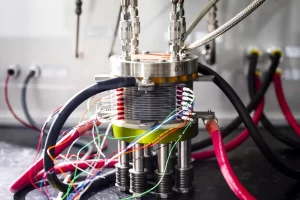
The Act promises an infusion of funding for “green hydrogen,” a zero-emissions hydrogen fuel capable of powering vehicles, jets and homes. The industry has struggled to bring down the cost of this technology, which is produced using wind and solar power and a high tech electrolysis process.
If prices can be made competitive with that of other forms of energy, hydrogen fuels could play a big role in lowering emissions. The hydrogen can also store solar and wind energy, helping to power the grid in off-hours, when the sun is not shining and the wind is not blowing.
Small modular nuclear reactors
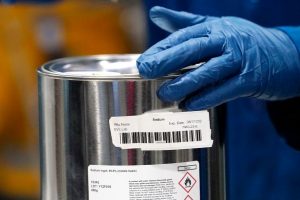
The nuclear industry for years has been trying to develop technology it promises will be smaller, nimbler and safer than the massive, decades-old reactors typically associated with nuclear energy.
Small scale, zero-emission nuclear plants could be used to power factories or small communities with the versatility — but not the pollution — of natural gas plants. The Act frees up funding for some of these projects, which would launch in the next few years.
Fusion energy

The holy grail of energy: Fusion is the process through which two nuclei combine to form an atom — what keeps the sun burning and generating energy.
Scientists have been working for decades to replicate that process in the lab, producing unlimited clean, safe renewable energy at a low cost. Scientists remain a long way off from reaching this goal, but the Inflation Reduction Act invests hundreds of millions of dollars in continued research.
Source: The Washington Post


